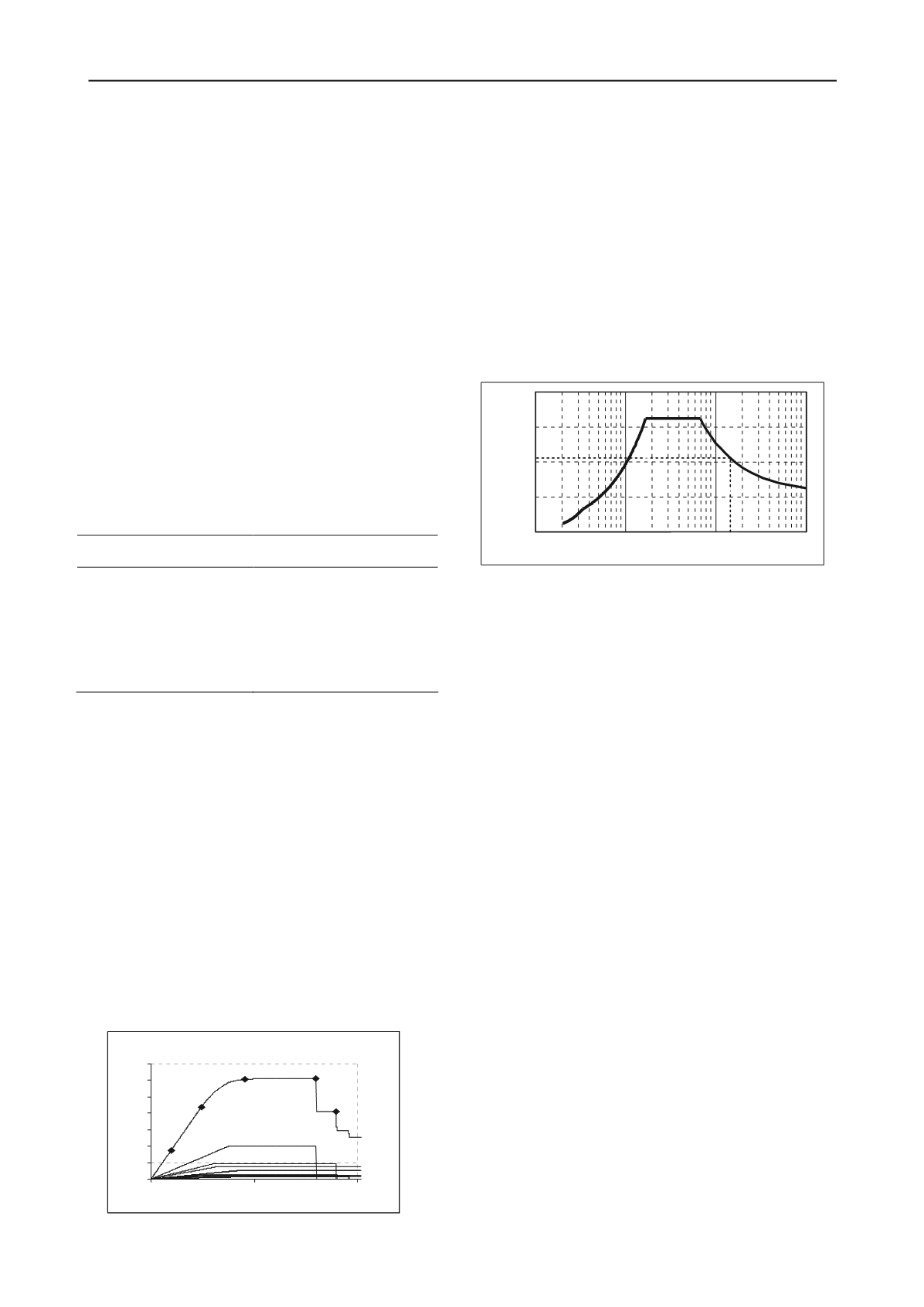
1520
Proceedings of the 18
th
International Conference on Soil Mechanics and Geotechnical Engineering, Paris 2013
2 EARTHQUAKE RISK ANALYSIS
2.1
Proposed process to derive earthquake risk
Calculating earthquake risk requires the cooperation of several
disciplines. To derive earthquake risk, the following steps
should be performed:
First, develop a hazard map of the investigated area;
taking into account local site effects, liquefaction
potential, soil type, etc. The target PGA would
correspond to 10% PE in 50 yrs (design value), this
will be the input parameter for vulnerability analysis.
Second, identify the building classes based on
construction methods. The vulnerability functions of
each building class can be derived from the baseline
structure.
Third, generate a building inventory based on the
vulnerability functions and the mean damage level.
This can be calculated for every building class.
Finally, assess damage based on all building classes,
and determine earthquake risk.
Some of the factors involved that affect hazard and
vulnerability are shown in Table 1 (EMS 1998).
Table 1. Factors affecting hazard and vulnerability
Factors affecting the
earthquake hazard:
Factors affecting building
vulnerability:
type of soil
thickness of layers
lateral variation of layers
the potential of liquefaction
master faults
construction system and period
quality of materials
workmanship
regularity in plan and elevation
position of the building
changes in function
state of the building, damages
dynamic characteristics
Data obtained from paleoseismic studies and seismic
engineering research will further enhance regional hazard
assessment and development of microzonation maps. Such
efforts would consider local site effects and examine a
significant database of buildings with computed vulnerability so
that earthquake risk can be assessed as:
RISK = HAZARD×VULNERABILITY×EXPOSURE (1)
2.2
Defining vulnerability
One of the basic tasks in determining vulnerability of buildings
is the classification of buildings from the point of view of
earthquake risk. The classification worked out by researchers
and agencies (EMS 1998, Vaseva 2002) is largely based on
inspections of structural systems, possibly the time of
construction and the proximity to earthquakes. The aim of this
study is to work out a more precise method, which takes more
factors into consideration such as the regularity in the layout,
the direction of earthquake wave propagation to the building,
etc.
Figure 1. Shear capacity of a building.
Vulnerability is the possibility of damage or loss of buildings
due to a seismic event; it is the characteristic of the building and
it can be expressed in probabilistic or statistical terms. A
vulnerability function is typically expressed as a function of
displacements caused by different ground motion intensity.
The vulnerability function of each building class can be
derived from the shear capacity of the buildings and the seismic
demand expressed by the spectral acceleration. The extent of
damage can be represented by damage grades related to the
onset of cracking, the yield point and to the destruction. This is
shown in Figure 1, where base shear is plotted against overall
building drift. Damage grades 1 and 2 are within the elastic
range of the structure, while grade 3 is beyond the onset of
yield. Grade 4 represents an ultimate condition while 5 indicates
partial collapse.
Figure 2. Elastic acceleration response spectrum medium stiff soil, 5%
damping, a
g
=1,1 m/s
2
.
Vulnerability as an input parameter to earthquake scenarios
requires evaluation of a large building population in a rather
short period of time using a simple method, which describes the
seismic performance of the buildings adequately.
There are different methods to analyze the vulnerability of
the buildings: methods used during the post-earthquake study as
well as analytical or numerical methods. Vulnerability can be
determined by observation or based on expert opinions; usually
based on post-earthquake studies. Other methods offer a
possibility to estimate the possible damages before an
earthquake occurs.
In the case of observed vulnerability, (Haddar 1994, Castano
1994, Porro et al. 1989) the damage is defined with the repair
cost as a ratio of the replacement cost or the amount of loss of
all affected buildings considering the number of casualties as a
ratio of their value. The relation between damage and
earthquake intensity is valid only for the region where it was
developed. Another method is to ask experts to estimate the
expected percentage of damage caused by a given intensity,
which are implied in macroseismic scales. These scales are used
to evaluate the possible damages after an earthquake (Fäh et al.
2001).
The analytical approaches are based on identification of
collapse mechanisms yielding the equivalent shear capacity
(Benedetti et al. 1996). The vulnerability is expressed as the
critical acceleration causing the mechanism to take place. In the
case of score assignment, the structural deficiencies are
identified and scores for different deficiencies are calibrated by
experts (Calvi 1999).
Detailed analyses are the most time-consuming evaluation of
vulnerability. These analyses correspond to the methods of
design: linear static analysis (lateral force method); modal-
response spectrum analysis which is a linear dynamic analysis;
pushover analysis (Lang et al. 2000); an increasingly popular
non-linear static analysis; and a fully non-linear time-history
dynamic analysis. These analyses above are listed in increasing
order of complexity, work demand, cost, and difficulty of
interpretation. For regional applications, finding a balance
between available resources and level of sophistication is a
major challenge.
0
200
400
600
800
1000
1200
1400
0,0
5,0
10,0
V
b
[kN]
Δ
[mm]
DG1
DG2
DG3
DG4
DG5
2,10
2.105
S
a
[m/s
2
]
0.1
1
10
100
0
1
3
4
14,3
2
f
1
[Hz]


